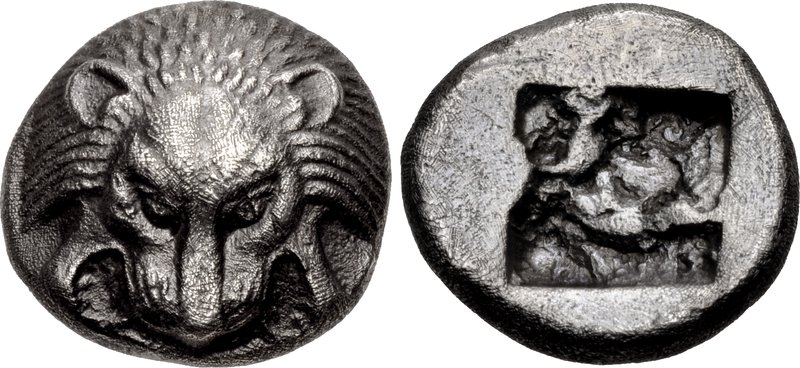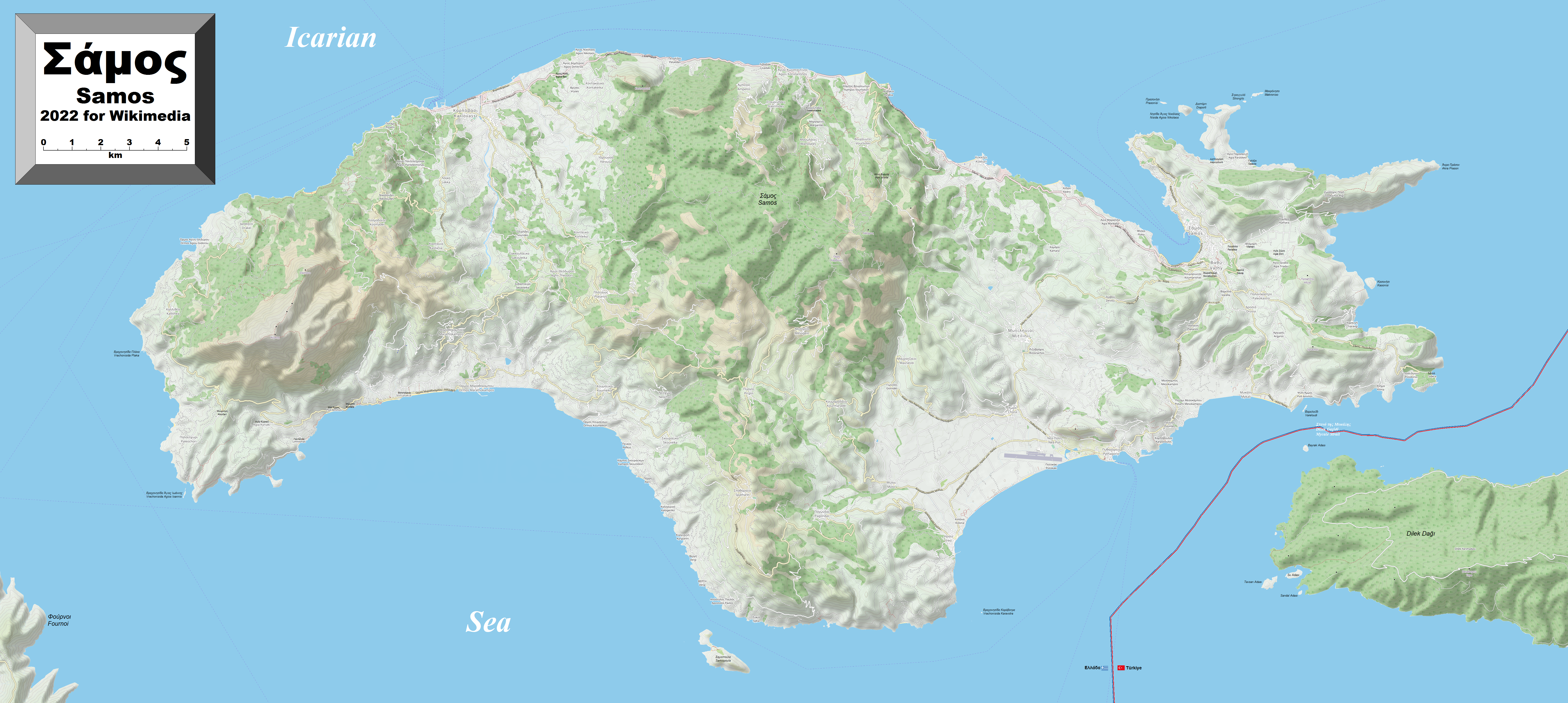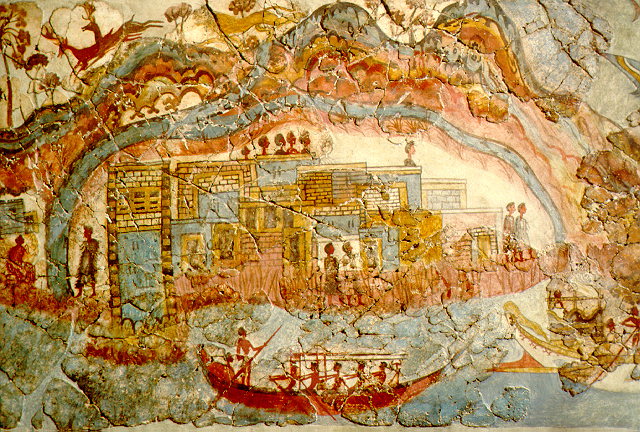|
Polycrates
Polycrates (; grc-gre, Πολυκράτης), son of Aeaces, was the tyrant of Samos from the 540s BC to 522 BC. He had a reputation as both a fierce warrior and an enlightened tyrant. Sources The main source for Polycrates' life and activities is the historian Herodotus, who devotes a large section of book 3 of his '' Histories'' to the rise and fall of Polycrates (3.39-60, 3.120-126). His account was written in the third quarter of the 5th century BC, nearly a century after Polycrates' death, was based mostly on oral traditions and incorporates many folk-tale elements. Furthermore, Herodotus creatively shaped his account of Polycrates in order to make general moral points and to comment on the imperialism of the Athenian empire in his own day. Some poetry from Polycrates' time comments on him in passing and there is a smattering of references to Polycrates in other literary sources ranging in date from the 4th century BC to the Roman Imperial period. These sources preserve u ... [...More Info...] [...Related Items...] OR: [Wikipedia] [Google] [Baidu] |
Aeaces (father Of Polycrates)
Aeaces ( grc, Αἰάκης, fl. 550 BC) was the father of Polycrates, the powerful tyrant of Samos. He was a prominent aristocrat in his own right, and may even have been the ruler of the island for a period in the mid-sixth century. He is sometimes referred to as Aeaces I to distinguish him from his grandson Aeaces (son of Syloson), Aeaces II, who ruled Samos in the late sixth and early fifth centuries BC. Life Herodotus mentions Aeaces' name but does not provide any information about his life. A very late source, the Suda, says that Polycrates' father was the ruler of Samos around 565 BC. His wealth and power is also suggested by his ability to attract the poets Ibycus and Anacreon to his circle – the former wrote poetry for the young Polycrates, while the latter was supposedly his tutor. A large seated statue of a goddess from the mid-sixth century BC, erected on the Astypalaea (the Samian Acropolis) bears an inscription identifying its dedicator as Aeaces. Stylistically, the ... [...More Info...] [...Related Items...] OR: [Wikipedia] [Google] [Baidu] |
Heraion Of Samos
The Heraion of Samos was a large sanctuary to the goddess Hera, on the island of Samos, Greece, 6 km southwest of the ancient city of Samos (modern Pythagoreion). It was located in the low, marshy basin of the Imbrasos river, near where it enters the sea. The late Archaic temple in the sanctuary was the first of the gigantic free-standing Ionic temples, but its predecessors at this site reached back to the Geometric Period of the 8th century BC, or earlier. As a testimony to the mercantile and naval power of Samos during Archaic Greece, and its exceptional architecture, the site of temple's ruins, with its sole standing column, was designated a UNESCO World Heritage Site, along with the nearby archeological site Pythagoreion in 1992. History The core myth at the heart of the cult of Hera at Samos is that of her birth. According to the local tradition, the goddess was born under a ''lygos'' tree (''Vitex agnus-castus'', the "chaste-tree"). At the annual Samian festival called ... [...More Info...] [...Related Items...] OR: [Wikipedia] [Google] [Baidu] |
Syloson (son Of Calliteles)
Syloson, son of Calliteles ( grc, Συλοσὼν Καλλιτέλους) is a ruler of Samos, known only from a brief reference in the second century AD historian Polyaenus. He may have lived in the early sixth century BC or in the mid-fifth century BC. According to Polyaenus, Syloson was a general of the Samians who was believed to have democratic leanings. During a war with an unspecified group of Aeolians, he encouraged the Samians to hold the traditional festival at the Heraion outside the city walls and then took advantage of their absence to seize control of the city for himself. J. P. Barron argues that this event took place in the early sixth century BC and that the government overthrown by Syloson was the regime that had replaced the Geomori. He suggests that Syloson was the founder of a tyrannical dynasty which ruled Samos for most of the sixth century BC, being succeeded first by Aeaces and then by Polycrates. By contrast, Aideen Carty argues that Syloson's coup too ... [...More Info...] [...Related Items...] OR: [Wikipedia] [Google] [Baidu] |
Samos
Samos (, also ; el, Σάμος ) is a Greek island in the eastern Aegean Sea, south of Chios, north of Patmos and the Dodecanese, and off the coast of western Turkey, from which it is separated by the -wide Mycale Strait. It is also a separate regional unit of the North Aegean region. In ancient times, Samos was an especially rich and powerful city-state, particularly known for its vineyards and wine production. It is home to Pythagoreion and the Heraion of Samos, a UNESCO World Heritage Site that includes the Eupalinian aqueduct, a marvel of ancient engineering. Samos is the birthplace of the Greek philosopher and mathematician Pythagoras, after whom the Pythagorean theorem is named, the philosophers Melissus of Samos and Epicurus, and the astronomer Aristarchus of Samos, the first known individual to propose that the Earth revolves around the sun. Samian wine was well known in antiquity and is still produced on the island. The island was governed by the semi-autonomous ... [...More Info...] [...Related Items...] OR: [Wikipedia] [Google] [Baidu] |
Syloson
Syloson ( grc-gre, Συλοσών, ''gen''.: Συλοσῶνος) governed Samos as a vassal ruler on behalf of the Achaemenid Persian Empire. He was appointed by king Darius I and was the brother of Polycrates of Samos. When Polycrates became tyrant of the island he exiled Syloson. Syloson went to Egypt, where he stayed until a "flame-coloured mantle" he was selling brought him in contact with Darius I of Persia. At the time Darius I of Persia was a spearman in Cambyses II of Persia's army. Syloson saw how much Darius liked the mantle and gave it to him for free. When Darius rose to power Syloson went to visit him in Susa. Darius offered him gold and silver for his kindness in the past with the mantle but Syloson refused and wanted military assistance in retaking Samos. "To me, O king, give neither gold nor silver, but recover and give me my fatherland Samos, which now that my brother Polycrates has been slain by Oroites is possessed by our slave." Darius agreed and sent an ex ... [...More Info...] [...Related Items...] OR: [Wikipedia] [Google] [Baidu] |
Thalassocracy
A thalassocracy or thalattocracy sometimes also maritime empire, is a state with primarily maritime realms, an empire at sea, or a seaborne empire. Traditional thalassocracies seldom dominate interiors, even in their home territories. Examples of this were the Phoenician states of Tyre, Sidon and Carthage, and the Italian maritime republics of Venice and Genoa of the Mediterranean; the Chola dynasty of India and the Austronesian states of Srivijaya, the Omani Empire and Majapahit of Maritime Southeast Asia. Thalassocracies can thus be distinguished from traditional empires, where a state's territories, though possibly linked principally or solely by the sea lanes, generally extend into mainland interiors in a tellurocracy ("land-based hegemony"). The term ''thalassocracy'' can also simply refer to naval supremacy, in either military or commercial senses. The Ancient Greeks first used the word ''thalassocracy'' to describe the government of the Minoan civilization, whose power ... [...More Info...] [...Related Items...] OR: [Wikipedia] [Google] [Baidu] |
Lygdamis Of Naxos
Lygdamis ( el, Λύγδαμις) was the tyrant of Naxos Island, Naxos, an island in the Cyclades, during the third quarter of the 6th Century BC. He was initially a member of the oligarchy which ruled Naxos. In 546 BC, Lygdamis supported the former Ancient Athens, Athenian tyrant Peisistratos in his landing at Marathon, Greece, Marathon, which led to the restoration of Peisistratos to power in Athens. As a reward, Peisistratos helped Lygdamis become tyrant of Naxos or to reclaim that position after losing it.Grant, Michael (1987). ''The Rise of The Greeks''. Guild Publishing London. p. 185 He secured his position by exiling potential rivals and extended his dominance over neighbouring islands such as Paros. Lygdamis contributed a force of Ancient Greek mercenaries, mercenaries to aid his ally Polycrates, the powerful tyrant of Samos, in his campaigns against Miletus and Mytilene. Lygdamis had an ambitious building program and in 530 BC he began work on a huge Temple of Apollo wh ... [...More Info...] [...Related Items...] OR: [Wikipedia] [Google] [Baidu] |
Amasis II
Amasis II ( grc, Ἄμασις ; phn, 𐤇𐤌𐤎 ''ḤMS'') or Ahmose II was a pharaoh (reigned 570526 BCE) of the Twenty-sixth Dynasty of Egypt, the successor of Apries at Sais. He was the last great ruler of Egypt before the Persian conquest. Life Most of our information about him is derived from Herodotus (2.161ff) and can only be imperfectly verified by monumental evidence. According to the Greek historian, he was of common origins. He was originally an officer in the Egyptian army. His birthplace was Siuph at Saïs. He took part in a general campaign of Pharaoh Psamtik II in 592 BC in Nubia. A revolt which broke out among native Egyptian soldiers gave him his opportunity to seize the throne. These troops, returning home from a disastrous military expedition to Cyrene in Libya, suspected that they had been betrayed in order that Apries, the reigning king, might rule more absolutely by means of his Greek mercenaries; many Egyptians fully sympathized with them. General Am ... [...More Info...] [...Related Items...] OR: [Wikipedia] [Google] [Baidu] |
Histories (Herodotus)
The ''Histories'' ( el, Ἱστορίαι, ; also known as ''The History'') of Herodotus is considered the founding work of history in Western literature. Written around 430 BC in the Ionic dialect of classical Greek, ''The Histories'' serves as a record of the ancient traditions, politics, geography, and clashes of various cultures that were known in Greece, Western Asia and Northern Africa at that time. Although not a fully impartial record, it remains one of the West's most important sources regarding these affairs. Moreover, it established the genre and study of history in the Western world (despite the existence of historical records and chronicles beforehand). ''The'' ''Histories'' also stands as one of the earliest accounts of the rise of the Persian Empire, as well as the events and causes of the Greco-Persian Wars between the Persian Empire and the Greek city-states in the 5th century BC. Herodotus portrays the conflict as one between the forces of slavery (the Pers ... [...More Info...] [...Related Items...] OR: [Wikipedia] [Google] [Baidu] |
Tyrant
A tyrant (), in the modern English usage of the word, is an absolute ruler who is unrestrained by law, or one who has usurped a legitimate ruler's sovereignty. Often portrayed as cruel, tyrants may defend their positions by resorting to repressive means. The original Greek term meant an absolute sovereign who came to power without constitutional right, yet the word had a neutral connotation during the Archaic and early Classical periods. However, Greek philosopher Plato saw ''tyrannos'' as a negative word, and on account of the decisive influence of philosophy on politics, its negative connotations only increased, continuing into the Hellenistic period. The philosophers Plato and Aristotle defined a tyrant as a person who rules without law, using extreme and cruel methods against both his own people and others. The ''Encyclopédie'' defined the term as a usurper of sovereign power who makes "his subjects the victims of his passions and unjust desires, which he substitutes ... [...More Info...] [...Related Items...] OR: [Wikipedia] [Google] [Baidu] |
Hera
In ancient Greek religion, Hera (; grc-gre, Ἥρα, Hḗrā; grc, Ἥρη, Hḗrē, label=none in Ionic and Homeric Greek) is the goddess of marriage, women and family, and the protector of women during childbirth. In Greek mythology, she is queen of the twelve Olympians and Mount Olympus, sister and wife of Zeus, and daughter of the Titans Cronus and Rhea. One of her defining characteristics in myth is her jealous and vengeful nature in dealing with any who offend her, especially Zeus' numerous adulterous lovers and illegitimate offspring. Her iconography usually presents her as a dignified, matronly figure, upright or enthroned, crowned with a ''polos'' or diadem, sometimes veiled as a married woman. She is the patron goddess of lawful marriage. She presides over weddings, blesses and legalises marital unions, and protects women from harm during childbirth. Her sacred animals include the cow, cuckoo and the peacock. She is sometimes shown holding a pomegranate, as an ... [...More Info...] [...Related Items...] OR: [Wikipedia] [Google] [Baidu] |
Aeaces (son Of Syloson)
Aeaces, son of Syloson ( grc, Αἰάκης Συλοσῶνος) was the ruler of Samos in the late sixth and early fifth centuries BC. He belonged to an established dynasty of Samian rulers - his father Syloson had been installed as ruler of Samos by the Persian king Darius I around 520 BC and his uncle Polycrates had reigned before that. Aeaces was deprived of his tyranny by Aristagoras, when the Ionians revolted against Persian Persian may refer to: * People and things from Iran, historically called ''Persia'' in the English language ** Persians, the majority ethnic group in Iran, not to be conflated with the Iranic peoples ** Persian language, an Iranian language of the ... rule in 500 BC. He then fled to the Persians, and persuaded the Samians to abandon the other Ionians in the sea-fight between the Persians and Ionians. After this battle, in which the latter were defeated, he was restored to the tyranny of Samos by the Persians in 494 BC. Notes References * {{SmithDG ... [...More Info...] [...Related Items...] OR: [Wikipedia] [Google] [Baidu] |








_Pompeian_Art.jpg)
